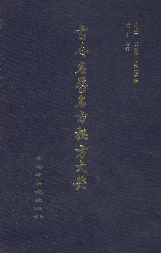
主要责任者: 倪兴华,庞振中,张德超;武常流,尹宝光,王德润等
责任方式: 主编;副主编
出版者: 中国中医药出版社
出版地: 北京
字数: 1167 千字
页码: 3-732
开本: 16
中图分类号: R
装帧: 精
语种:中
定价:36.00
出版时间:1993-01
丛书多卷书否:否
书目简介:本册工具书共收录4647条词条。
被引频次:13
- Hebron
- Hecate
- Hecatoncheires
- Hecht,Ben
- Hecker,Isaac Thomas
- hectare
- Hector
- Hecuba
- He de la Cite
- hedgehog
- hedgehog cactus
- hedge sparrow
- hedging
- hedonism
- Heenan,John Carmel,Cardinal
- Hegelianism
- Hegell,GeorgWilhelm Friedrich
- Hegira
- Heiberg,Johan Ludvig
- Heidegger,Martin
- Heidelberg
- Heidelberg Man
- Heidenstam,Verner von
- Heifetz,Jascha
- Heijermans,Herman